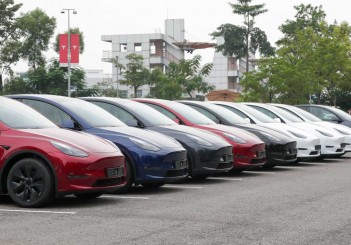BERLIN: While modern-day cars have largely eliminated stubborn problems that used to plague vehicles from generations past - particularly rust - cars these days seem to have more and more issues with advanced components like control units, switches and displays.
Like mechanical parts, electronic ones can also age and eventually fail. "The components are usually designed such that they only fail when the entire car reaches the end of its expected lifespan," says Christian Buric from the ADAC, Germany’s largest automobile club. And while most components do not need special care, motorists usually can’t upgrade them either.
Sensors and actuators with electromechanical components tend to require more care, and should be regularly checked in workshops in accordance with a car’s maintenance plan.
According to the ADAC, automotive electricians frequently report that electronic control units fail on their own, and not necessarily due to external factors such as water damage or excess voltage.
"They often show the same defects. It can be because a component has been manufactured a bit too thriftily, or even due to something as mundane as a transistor receiving too little solder," says Buric.
Technology expert Marcel Muehlich of the Auto Club Europa (ACE), another major German automobile club, advises drivers to pay especially attention close attention to the car’s power supply. When a vehicle is driven only occasionally or at irregular intervals, it can cause the starter battery to get drained.
Drivers should also be careful when trying to revive a drained battery. "In order to avoid damage to the on-board electronics, owners should follow jump-start instructions carefully and avoid electronic surges," says Muehlich.
Failure of electronic components can never be completely avoided, says repair expert Neofitos Arathymos. After all, the constant demands placed on a vehicle through regular driving and the resulting aging process can put a major strain on all components, electronic and otherwise.
Heat losses in electronic control units can cause plasticisers to emit fumes, making them more brittle and eventually causing them to break down. Meanwhile, defects with a car’s mechanical components can also have knock-on effects for electronic parts.
"Defective shock absorbers increase the vibrations in the vehicle, which also reduces the lifespan of electronic control units," says Arathymos.
When there’s a defect with an electronic component, the only solution is usually an expensive new part. Luckily, there are plenty of electronic repair providers that offer good value.
When choosing where to get an electronic part repaired, "make sure it has two or more years of warranty and preferably comes from a company that works together with dealerships," says Buric.
Even better is if the entire order is handled by the dealership. This way, in the event of a complaint or defect, the dealership would have to assume responsibility for the customer warranty.
Many control units have a few common faults that can be properly repaired by an expert. "This is cheaper than buying a new part and can sometimes even prevent write-offs," says Buric. "This is because the control unit does not have to be trained and coded all over again."
Similarly, some specialist workshops can repair pixel errors or other damage to electronic displays for speedometers and entertainment systems. In some cases, however, a used spare part costs less than a complex repair involving elaborate removal and installation. Those who use an external repair service should remember that doing so will often void the manufacturer's warranty.










